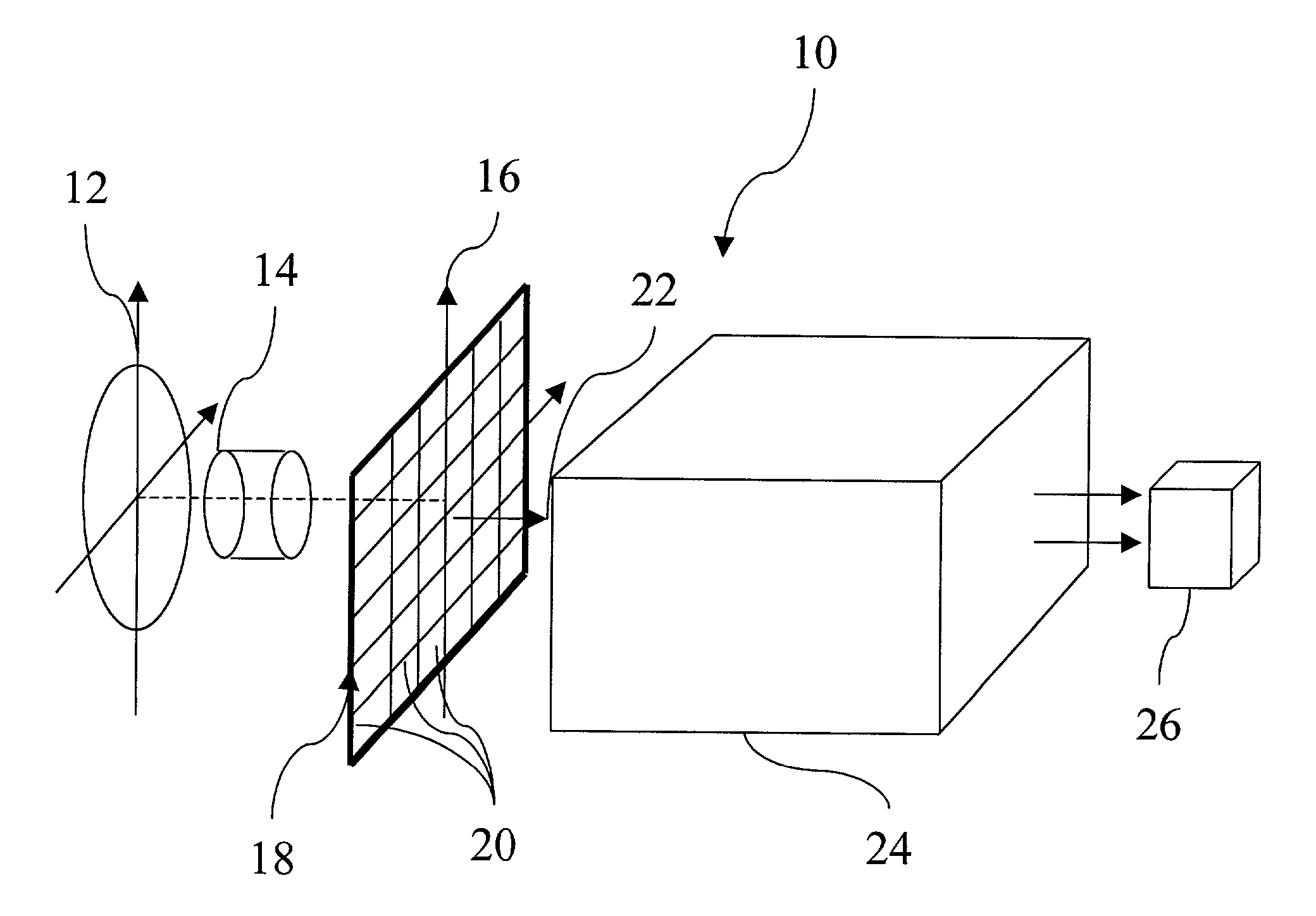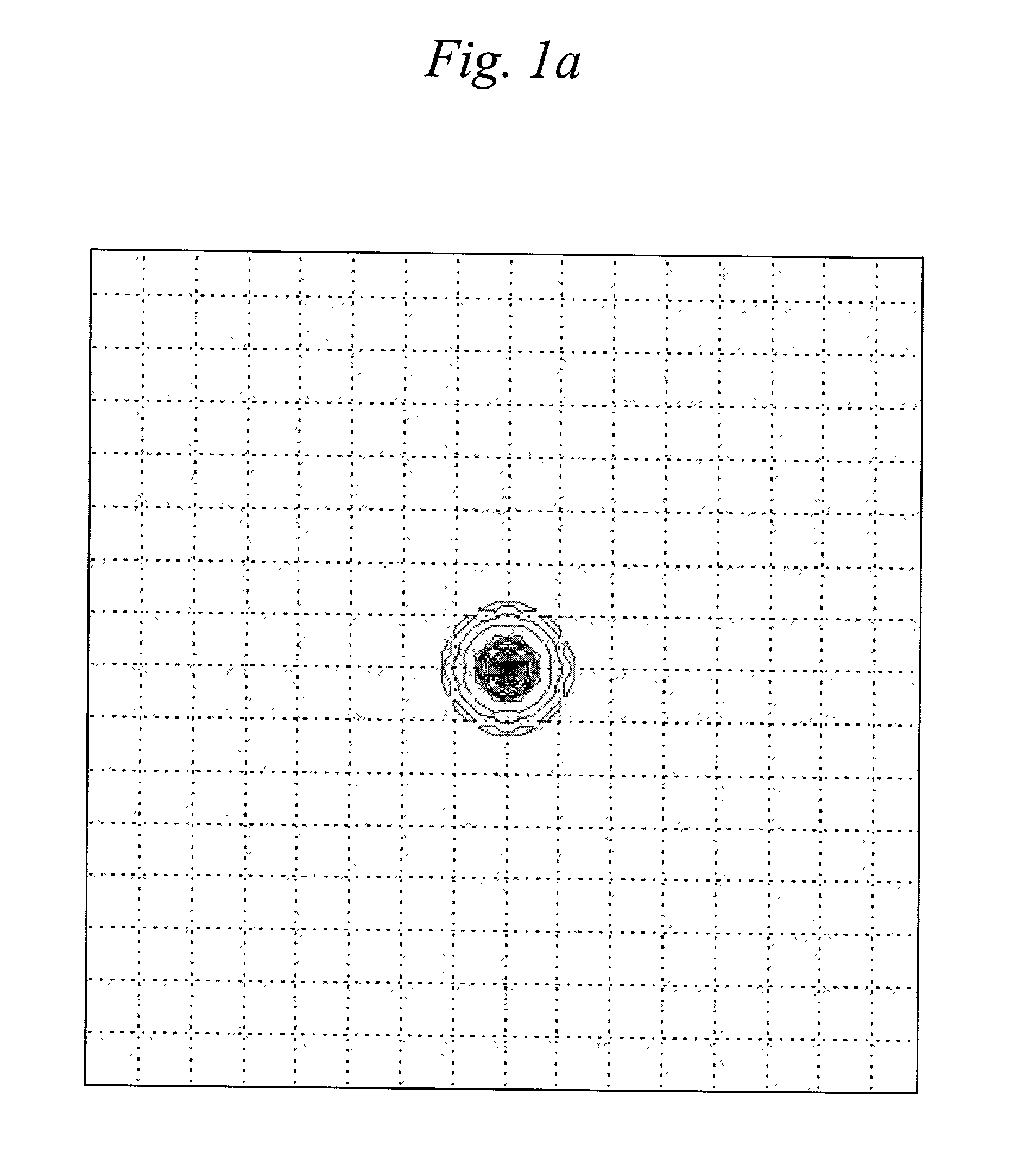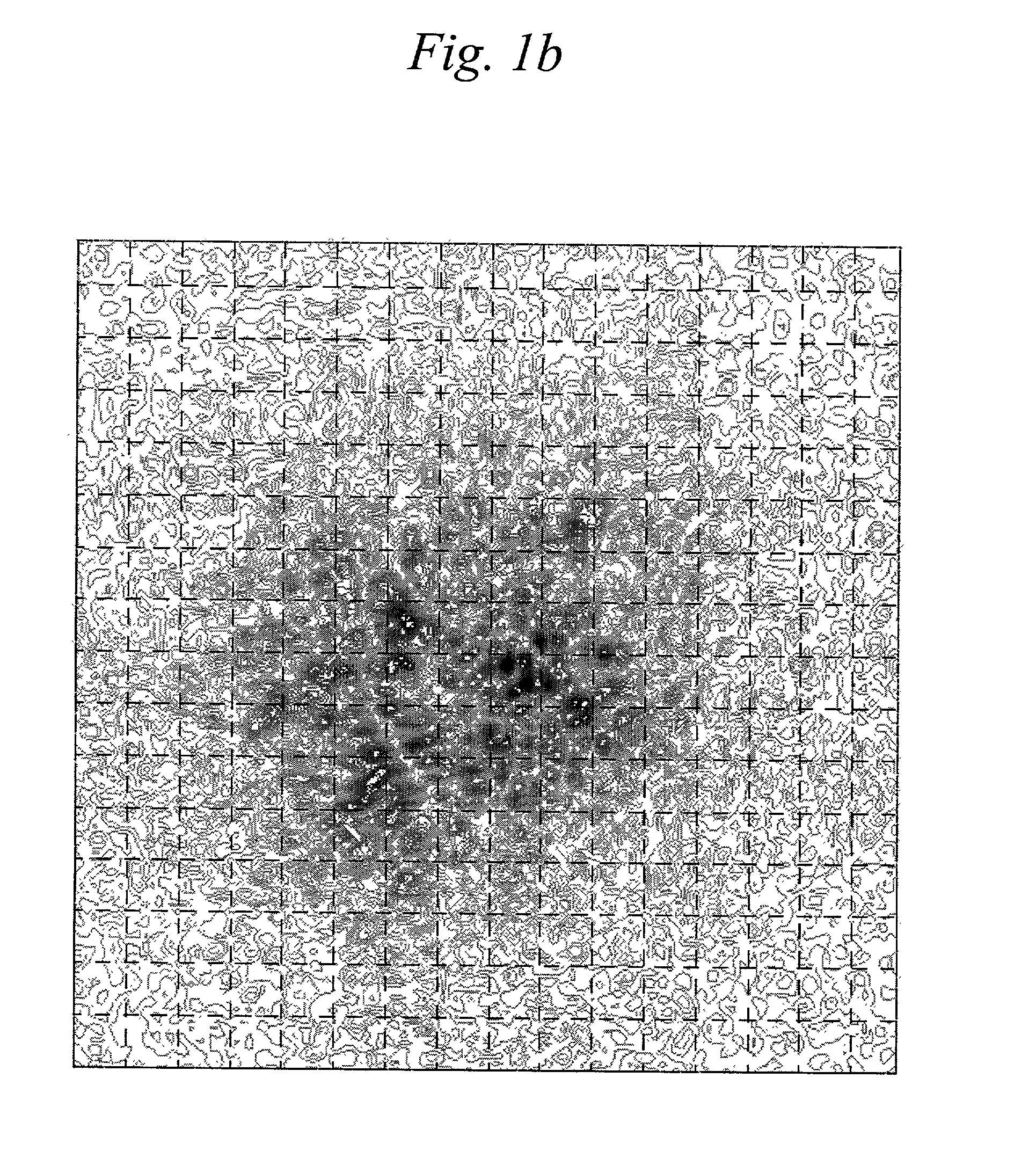Adaptive detector arrays for optical communications receivers
a technology of optical communication receiver and detector array, which is applied in the direction of transmission monitoring, line-of-sight transmission, electromagnetic transmission, etc., can solve the problems of reducing the effective diameter of the receiving telescope, reducing and affecting the operation of large telescopes in atmospheric conditions that rarely permit diffraction-limited operation, etc., to achieve the effect of maximizing the probability of correct detection
- Summary
- Abstract
- Description
- Claims
- Application Information
AI Technical Summary
Benefits of technology
Problems solved by technology
Method used
Image
Examples
Embodiment Construction
[0033]The present invention is directed to an optical communications receiver comprising a wide-band optical detector array and a high-speed digital signal processor assembly programmed to operate on the raw data from the detector array to ameliorate the effects of atmospheric turbulence on the performance of the optical receiver in real-time while operating within the terrestrial atmosphere, or while attempting to communicate through any similar turbulent medium.
[0034]An example of the increase in the effective dimensions of an exemplary receiver point-spread function over its diffraction-limited value as a result of atmospheric turbulence is shown by comparison in FIGS. 1a and 1b. The hypothetical signal shown in these figures correspond to a telescope having a 1 m aperture, an 0.3 m central obstruction, and a 4 cm atmospheric coherence. As shown in FIG. 1a, under ideal conditions the undistorted signal generates a diffraction limited point spread function (PSF) in the detector ar...
PUM
 Login to View More
Login to View More Abstract
Description
Claims
Application Information
 Login to View More
Login to View More - R&D
- Intellectual Property
- Life Sciences
- Materials
- Tech Scout
- Unparalleled Data Quality
- Higher Quality Content
- 60% Fewer Hallucinations
Browse by: Latest US Patents, China's latest patents, Technical Efficacy Thesaurus, Application Domain, Technology Topic, Popular Technical Reports.
© 2025 PatSnap. All rights reserved.Legal|Privacy policy|Modern Slavery Act Transparency Statement|Sitemap|About US| Contact US: help@patsnap.com



